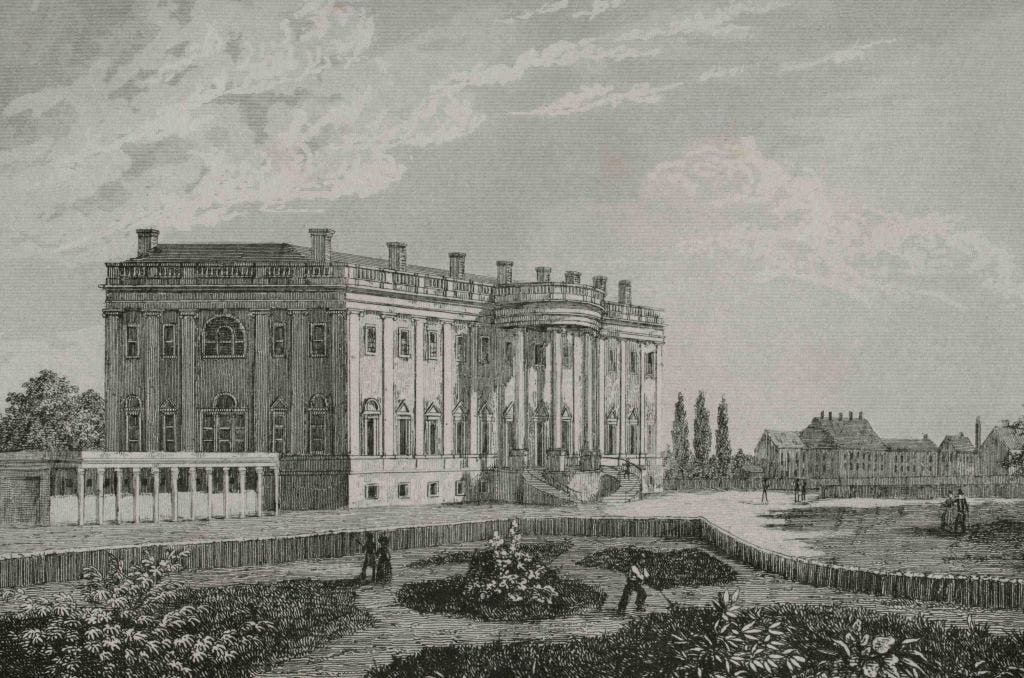Construction of the White House, a symbol of American power and political stability, began on October 13, 1792, with the laying of its cornerstone. Irish-born architect James Hoban won the design competition for the neoclassical mansion, which was planned and constructed under the personal supervision of President George Washington. The White House was inspired by the Palladian style of the Leinster House in Dublin. President Washington announced in 1791 the construction of a new capital city, named Washington, D.C., with plans for an executive mansion to be built on the site chosen by Washington and French planner Pierre Charles L’Enfant.
The President’s House, also known as the Executive Mansion, was called the White House as early as 1812 due to its white-gray sandstone construction and distinctive white finish from lime paint applied in 1798. The name of the mansion was officially changed to the White House by President Theodore Roosevelt on October 12, 1901. Slaves and paid labor were used in clearing land for the city and constructing the mansion. Freemasons played a significant role in lobbying for Hoban to build the White House and led the cornerstone ceremony. The mansion suffered damage during the War of 1812 when British troops ransacked and torched it, along with the U.S. Capitol, in 1814.
The White House was reconstructed following the War of 1812, with Hoban overseeing the work and spending the remainder of his life in Washington, D.C. Its distinctive porticoes were completed in 1829, giving it a classical look that is recognizable worldwide today. The White House features 132 rooms, 35 bathrooms, 28 fireplaces, and eight staircases, requiring 570 gallons of white paint to coat its facade. It was the largest home in the United States until after the Civil War and cost $232,372 to build. Although largely constructed during Washington’s time in office, he never lived in it, and it was occupied by President John Adams and First Lady Abigail on November 1, 1800. Adams expressed hopes for honest and wise leaders to inhabit the White House in a letter to his wife.
The White House’s construction and history have cemented its status as a global symbol of American leadership and stability. The design competition won by James Hoban led to the construction of a neoclassical mansion under President George Washington’s supervision in the new capital of Washington, D.C. Despite suffering damage during the War of 1812, the White House was reconstructed and has since become an iconic structure with a classical appearance and significant historical importance. The involvement of Freemasons in the construction and preservation of the White House adds to its legacy, along with the various presidents who have resided in the residence since its completion. The White House continues to be a symbol of American democracy and presidential leadership, with its iconic architecture and history attracting visitors and observers from around the world.


